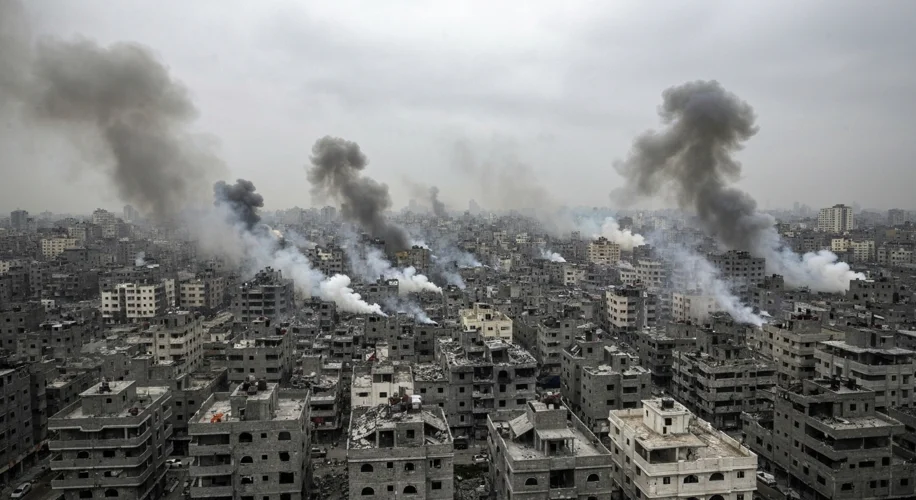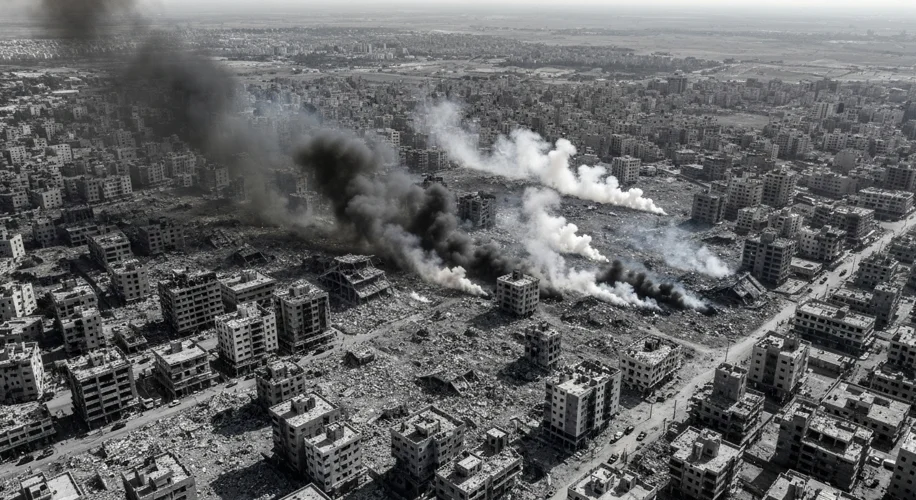The relentless drone of aircraft, the earth-shattering roar of explosions, the acrid smell of dust and despair – these have become grim refrains in the history of Gaza City. For decades, this densely populated strip of land has been a theater of conflict, its urban landscape bearing the brutal testament to repeated bombing campaigns.
To understand the present scars, we must look to the past. Gaza City, a cradle of civilization for millennia, has witnessed empires rise and fall, its strategic location on the Mediterranean coast making it a coveted prize and a frequent battleground. From the Ottoman era to the British Mandate, the city’s history is interwoven with the broader geopolitical currents of the Middle East.
The modern chapter of its ordeal, however, gained particular intensity following the Arab-Israeli wars. In the aftermath of the 1967 Six-Day War, Gaza, along with the West Bank, came under Israeli military occupation. This period marked the beginning of a new, deeply fraught dynamic, one where the Israeli military conducted operations in and over the Gaza Strip, including airstrikes and shelling, in response to attacks and perceived threats originating from Palestinian militant groups.

The landscape of conflict shifted dramatically with the Oslo Accords in the 1990s, which envisioned a pathway to Palestinian statehood. However, the promise of peace proved elusive. The subsequent intifadas, periods of intense Palestinian uprising against Israeli occupation, saw a significant escalation of violence. During these times, Gaza City often became a focal point, with both Palestinian rocket fire and Israeli retaliatory airstrikes and incursions becoming tragically routine.
The human cost of these campaigns is immeasurable. Families have been torn apart, homes reduced to dust, and entire neighborhoods devastated. Children have grown up knowing the chilling whistle of incoming missiles and the terrifying rumble of bombardment as a constant backdrop to their lives. The psychological scars run as deep as the physical damage, leaving behind a generation marked by trauma and loss.
For instance, the 2008-2009 Operation Cast Lead saw extensive aerial bombardments and ground operations. Thousands of Palestinian civilians were killed or injured, and vast swathes of infrastructure were destroyed. The dense urban environment of Gaza City meant that there was often little space for civilians to escape the violence, exacerbating the impact of the bombings.
Another significant period of intensified bombing occurred in 2014 during Operation Protective Edge. Again, Gaza City bore the brunt of the conflict, with reports of heavy civilian casualties and widespread destruction of homes, schools, and hospitals. International observers and human rights organizations raised serious concerns about the proportionality of the attacks and the impact on the civilian population.
More recently, the conflicts of 2021 and 2023-2024 have further etched the landscape of Gaza City with the devastating effects of aerial warfare. Each escalation brings renewed destruction, pushing an already beleaguered population further into despair and desperation. The destruction of civilian infrastructure, including residential buildings, mosques, and schools, has been a recurring and deeply distressing feature of these campaigns.
The historical context is crucial. Gaza City is not merely a battlefield; it is a home for over two million people, crammed into a narrow strip of land. The high population density means that any military operation involving aerial bombardment carries an inherent risk of immense civilian harm. The question of international law, particularly concerning the protection of civilians in armed conflict, is perpetually raised in the context of these campaigns.
The legacy of these bombing campaigns is a city forever marked by conflict. The resilience of its people is undeniable, yet the physical and emotional toll is a constant, heavy burden. As we reflect on the history of Gaza City, we are reminded of the profound human cost of war, a cost measured not just in buildings destroyed, but in lives shattered and futures imperiled.

